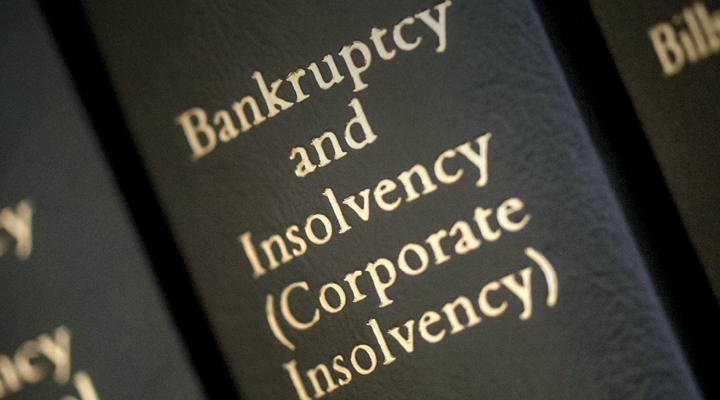

On 9 September 2021, the government announced that restrictions on statutory demands and winding up petitions brought in under the Corporate Insolvency and Governance Act 2020 (“CIGA”) are due to expire on 30 September 2021 would be replaced with more limited restrictions. The changes have since been formulated in amendments to Schedule 10 to CIGA brought into force by the Corporate Insolvency and Governance Act 2020 (Coronavirus) (Amendment of Schedule 10) Regulations 2021 (SI 2021/1029).
The changes
The new Schedule 10 provides that a creditor may not present a petition during the relevant period unless four conditions, A to D, are met. The ‘relevant period’ is the six month period from 1 October 2021 to 22 March 2022. The conditions are set out under paragraph 1:
- Condition ‘A’ is that the creditor is owed a debt (a) whose amount is liquidated, (b) which has fallen due for payment, and (c) which is not an excluded debt. This means that a creditor cannot present a winding up petition in respect of a debt which is unliquidated nor in respect of a future or contingent debt. An ‘excluded debt’ is a debt in respect of rent, or any sum or other payment that a tenant is liable to pay, under (a) in England and Wales, a relevant business tenancy; or (b) in Scotland, a lease as defined in section 7(1) of the Law Reform (Miscellaneous Provisions) (Scotland) Act 1985 and which is unpaid by reason of a financial effect of coronavirus.
- Condition ‘B’ is that the creditor has delivered written notice to the company containing the information prescribed in paragraph 1(4) of Schedule 10, including the statement that if no proposal to the creditor’s satisfaction is made within the period of 21 days, the creditor intends to present a winding up petition.
- Condition ‘C’ is that at the end of the 21-day period, the company has not made a proposal for the payment of the debt to the creditor’s satisfaction.
- Condition ‘D’ is that the debt is £10,000 or This limitation applies both to a single creditor presenting a petition and to multiple creditors presenting a petition.
Paragraph 1 (9) makes provision for a creditor to apply to the court for an order (a) disapplying conditions B and C or (b) that the 21-day period in condition C be shortened.
Paragraph 2 prescribes consequential changes to Rule 7.5(1) of the Insolvency (England and Wales) Rules 2016, which require the winding up petition to contain a statement that the requirements under paragraph 1 are met and that no proposals for payment of the debt have been made, or a summary of the reasons why the proposals are not to the creditor’s satisfaction.
“The reality is that most creditors do invite settlement proposals before issuing a winding up petition…”
Comment
As foreshadowed in the announcement, the government has not removed the protections offered to businesses wholesale but has adopted a graduated approach, which aligns with its policy on protecting tenants with rent arrears that have accrued as a result of the pandemic. As set out in the last edition of the Digest, the government extended the moratorium on preventing landlords from forfeiting commercial leases and evicting tenants for non-payment of rent under section 82 of the Coronavirus Act 2020 until 25 March 2022, and the restriction on the use of the Commercial Rent Arrears Recovery scheme until 25 March 2022. The regime for coronavirus related rent arrears is that Landlords and Tenants should agree payment plans, and failing agreement there will be an arbitration procedure. The arbitration provisions have not yet been published, but should focus, not on the right to be paid rent, but what is fair in the circumstances between Landlord and Tenant. The carve out under new Schedule 10 for ‘excluded debts’ ensures there is consistency in approach.
Another notable feature of the new Schedule 10 is the increase in the debt limit from £750 to £10,000. This is the first increase in the debt limit since the coming into force of the Insolvency Act 1986. This change has not, however, been introduced in relation to statutory demands under section 123(1)(a) of the Insolvency Act 1986.
A creditor may still wish to serve a statutory demand to establish inability to pay, and the requirements of a demand have not changed. However, it is clear from new Schedule 10 that if a creditor is going to serve a statutory demand as a precursor to a winding up petition, it must be for a debt or debts of £10,000 or more or no petition can be presented.
There is now requirement to give the company 21 days’ notice of an intention to present a winding up petition. The notice is not simply a demand for payment. The 21 days is for the company to make a proposal for the payment of the debt to the creditor’s satisfaction. The language is similar to that used in bankruptcy: under section 271 of the Insolvency Act 1986, a bankruptcy petition may be dismissed if the court is ‘satisfied’ that the debtor has made an offer to ‘secure or compound for a debt’, the acceptance of which would have required the dismissal of the petition and the offer was unreasonably refused. The key difference under section 271 is that it is the court that has to be satisfied the offer was unreasonably refused, whereas under the notice in Condition B, the creditor must be satisfied. This suggests that the test is subjective. There is no mechanism for dealing with a failure to agree, unlike in the case of coronavirus related rent. The absence of any mechanism for dealing with the failure to agree points towards the conclusion that a refusal to accept a settlement proposal is not intended to be a freestanding ground on which the court may dismiss the petition. If the intention was to make the failure to accept a settlement proposal a ground for dismissal of the petition, then one would expect this to have been made clear by express wording, particularly as this would make in-roads into the general principle that a creditor is entitled to a winding up in respect of an undisputed debt. It remains to be seen whether, in a case where the court takes the view that the creditor’s refusal of an offer of compromise was unreasonable, it will refuse to wind up in its discretion at an early hearing.
One possibility is that the court may adjourn the petition for a period to give the creditor and the company further time to agree on a compromise.
It appears, therefore, that the provision has been implemented with a view to encouraging the consensual settlement of the debt without the need to issue proceedings. The reality is that most creditors do invite settlement proposals before issuing a winding up petition, so this provision formalises a well-established practice.
Whilst the Government is slowly lifting the moratorium it has not given creditors the right simply to enforce their claims. Lifting the limit to £10,000 means that debtors are only vulnerable to winding up if they owe a relatively significant sum. This will be important for small businesses struggling to refinance Covid period debt. If the threshold is met there is a mechanism, as there is in the case of rent, for compromise between debtor and creditor. Again, this will be important for smaller companies who might be able to reach bilateral compromises, but for whom schemes of arrangement or Part 26A arrangements are unrealistic.
An interesting question is the impact of these provisions on wrongful trading liability. It should follow that directors of companies that might be able to reach compromises, or which do not owe large sums, will not be liable for wrongful trading because there is a prospect that the company will avoid insolvent liquidation1.
These changes are part of the Government’s strategy of easing the moratorium and restoring creditors’ rights, but continuing to protect companies hit by debt accumulated over the coronavirus period. It’s a difficult balance. On the one hand debtors saddled with coronavirus debt need help managing their way out of the pandemic. On the other, creditors’ rights to payment cannot be taken away, and at some point they will need payment to keep their businesses alive.
1The relevant test under section 214(2)(b) of the Insolvency Act 1986 is that ‘at some time before the commencement of the winding up of the company, that person knew or ought to have concluded that there was no reasonable prospect that the company would avoid going into insolvent liquidation’. Further, section 214(3) provides ‘The court shall not make a declaration under this section with respect to any person if it is satisfied that after the condition specified in subsection (2)(b) was first satisfied in relation to him that person took every step with a view to minimising the potential loss to the company’s creditors as (assuming him to have known that there was no reasonable prospect that the company would avoid going into insolvent liquidation) he ought to have taken’.







![Brake & Anor v The Chedington Court Estate Ltd [2023] UKSC 29](https://southsquare.com/wp-content/uploads/2024/02/Brake-Anor-scaled-e1728649908896.jpeg)







